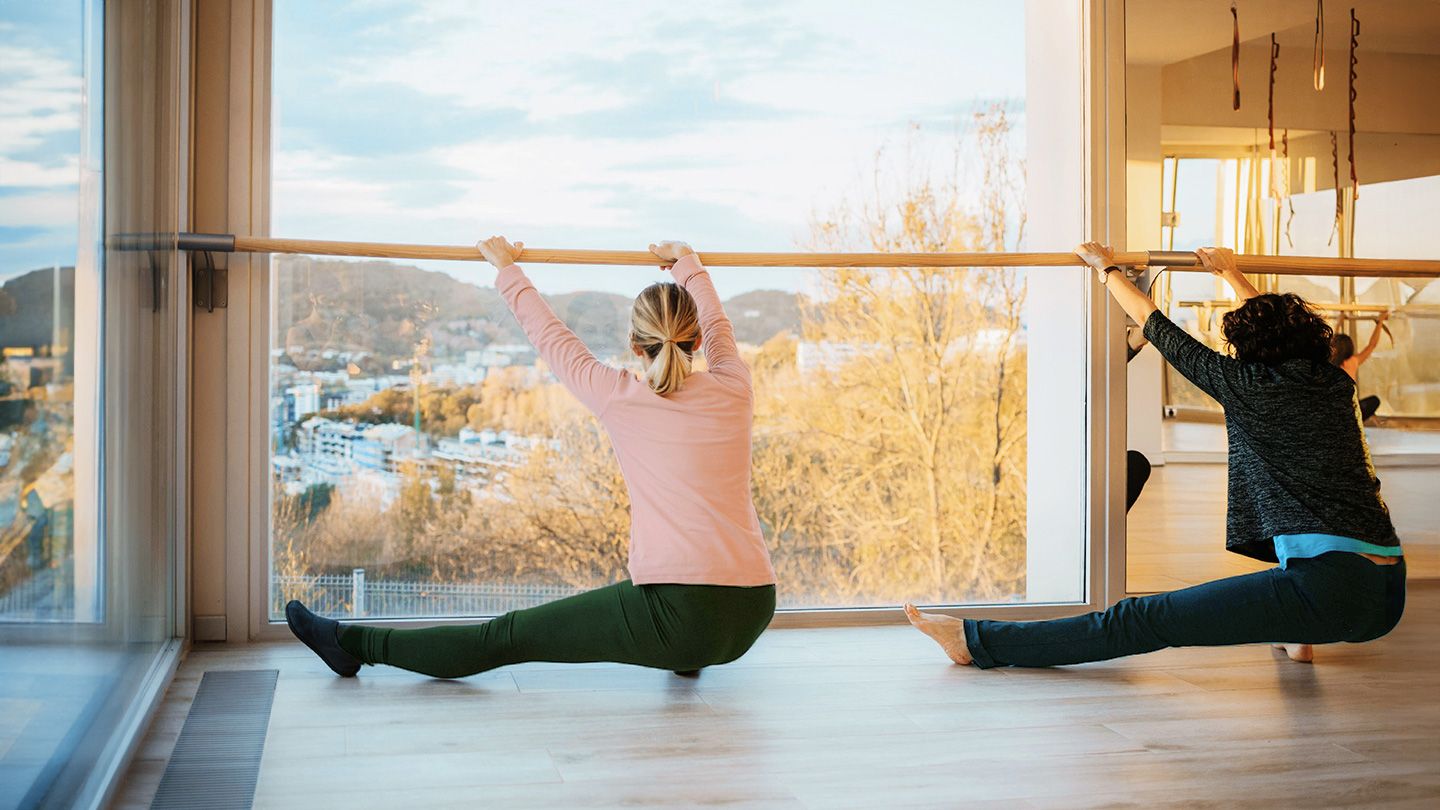Barre is decades old. This ballet, yoga, and Pilates routine continues to gain fans each year. The unique benefits of combining three established workouts may explain it.
Barre isn’t as thoroughly studied as yoga, Pilates, and ballet, yet it’s healthy. Here are seven.
1. You’ll Gain Flexibility
Healthy mobility requires flexibility, or the ability of muscles, ligaments, and tendons to passively stretch, according to the International Sports Science Association. Soft tissues need flexibility to move properly, which helps you function better in daily life, such as when you bend down or squat to pick something up off the floor or swivel your head to view behind you while driving.
According to ACE, inactivity and ageing cause many people to lose flexibility. Dr. Matzkin suggests barre workouts because they stretch.
2. You’ll Strengthen Your Muscles
Alexander Higa, an American Council on Exercise (ACE) certified personal trainer with Tempo in San Francisco, says barre’s ballet, Pilates, and yoga exercises strengthen the whole body, but they focus on the glutes, quadriceps, hamstrings, calves, and feet.
Elizabeth Matzkin, MD, a board-certified orthopaedic surgeon and the chief of Women’s Sports Medicine at Brigham and Women’s Hospital in Boston, says a barre workout strengthens your core and rotator cuff, which are often overlooked in strength routines.
3. You’ll Build Muscular Endurance
Barre entails holding several poses at the ballet barre or yoga mat. Isometric exercises contract muscles without changing length or movement, according to the Encyclopaedia of Behavioural Medicine. Your barre instructor may ask you to add pulses to your isometric holds.
Barre movements are modest, so they may not appear impressive. The National Academy of Sports Medicine (NASM) defines muscular endurance as the ability to produce and maintain force over time. Higa says muscular endurance is crucial to health because it helps you stand up straight and lift big objects.
4. Your Posture Will Improve
Barre may improve your posture if you’re worried. Dara Driessea, an ASFA-certified personal trainer and barre instructor with FlexIt in Barnegat, New Jersey, says class will focus on appropriate alignment by elongating your spine and pushing your shoulders down and back. Barre movements strengthen your chest, shoulders, and core, improving posture.

5. You’ll Have Better Coordination — and a Fitter Brain
Barre sessions use music and dance to improve coordination. More coordinated people are less likely to hurt themselves. “Coordination becomes more important as you age to help with balance,” explains Higa.
Another reward? “The movements will challenge not only your body but also your brain,” explains Higa. There are no barre studies, but dance research reveals brain-health benefits, making it especially good for elderly folks. Dance enhances working memory, cognitive flexibility, and learning in older adults of various cognitive abilities, according to a review and meta-analysis.
6. You’ll Get a Mental Health Boost
Barre can boost mood since exercise is the best way to regulate mood, according to a study.
Joyful movement like what you’ll do in barre honours what the human body can do’, says Ginger Garner, DPT, founder and CEO of Living Well, a lifestyle medicine centre in Greensboro, North Carolina. Barre has a mindfulness component, so “as a result, you’ll get some mental health benefits,” she explains. Mind-body workouts like Pilates and yoga—two barre elements—have been shown to promote mental clarity and positivity.
7. You’ll Have Better Balance
Both flexibility and balance deteriorate with ageing. Good balance, which Harvard Health Publishing describes as the capacity to move without falling, helps prevent injury and improve daily chores and athletic performance. Balance helps older persons avoid falls and injuries, according to the NIA.
Enter: Barre. Many movements in this workout demand balancing on one leg while grasping a ballet barre or chair. Single-leg balancing may offer many benefits, according to research. In the British Journal of Sports Medicine, more than 1,700 adults between 51 and 75 who could balance on one leg for at least 10 seconds had a higher 12-year survival rate.
Conclusion:
The fusion of ballet-inspired movements, strength training, and mindfulness in barre not only contributes to physical fitness but also nurtures mental resilience. By engaging both the body and mind, individuals can experience increased stamina, improved posture, and a heightened sense of well-being.
Whether you’re a fitness enthusiast or a newcomer to exercise, the potential health benefits of barre workouts make them an appealing option for those seeking a dynamic and enjoyable way to stay active. As we celebrate the positive impacts on strength, flexibility, and mental clarity, it becomes evident that barre is not just a workout; it’s a transformative experience for both body and mind. Embrace the barre, and let its holistic benefits elevate your journey to a healthier and more balanced lifestyle.
FAQ’s
Q1. What is barre, and how does it differ from other workout routines?
Barre is a fitness practice that combines ballet-inspired movements, strength training, and elements of yoga and Pilates. It differs by focusing on small, controlled movements to target specific muscle groups.
Q2. Can beginners with limited fitness experience try barre workouts?
Absolutely! Barre workouts are designed to be inclusive and adaptable to various fitness levels. Many classes offer modifications, making them suitable for beginners.
Q3. What are the potential benefits of barre workouts for physical health?
Barre workouts can contribute to improved flexibility, enhanced muscle tone, better posture, and increased core strength. The emphasis on small, isometric movements helps target specific muscle groups effectively.